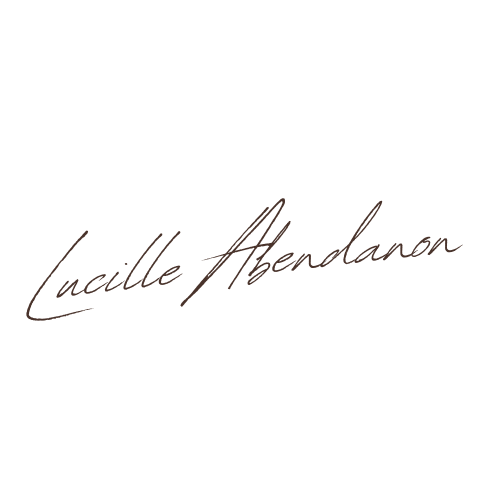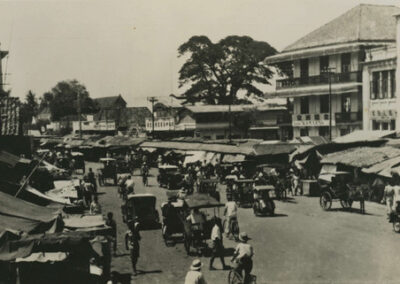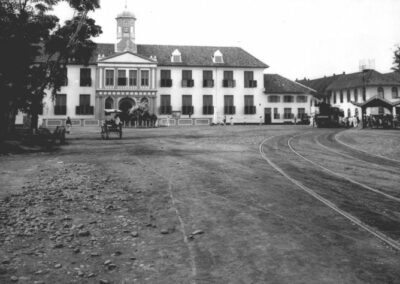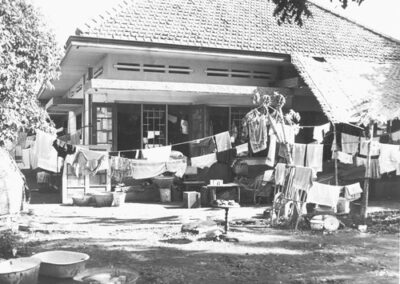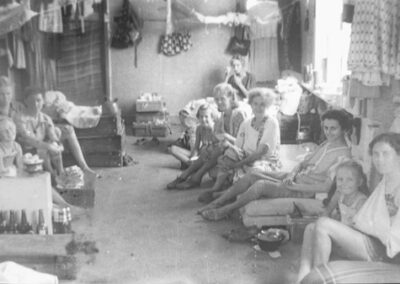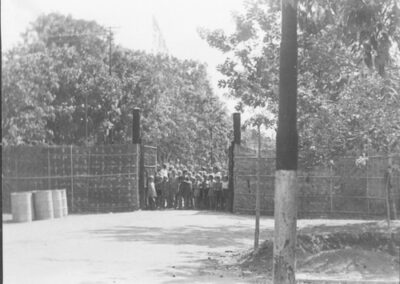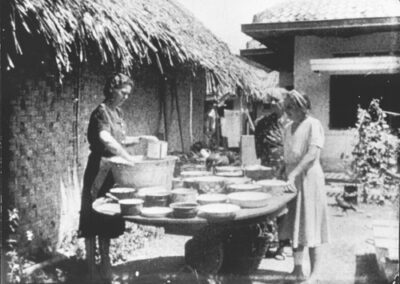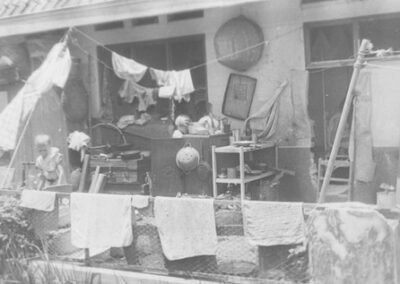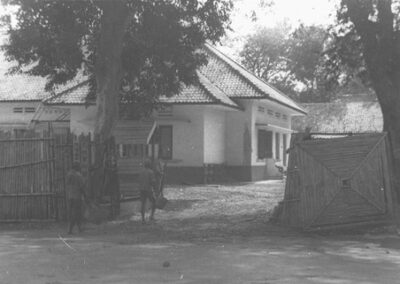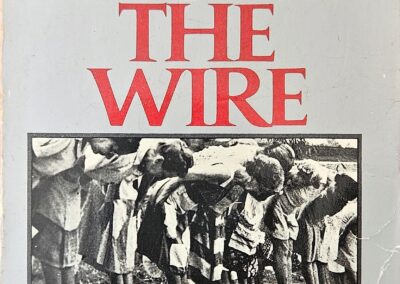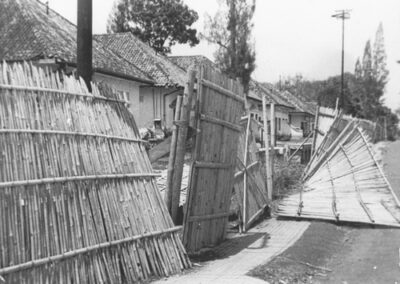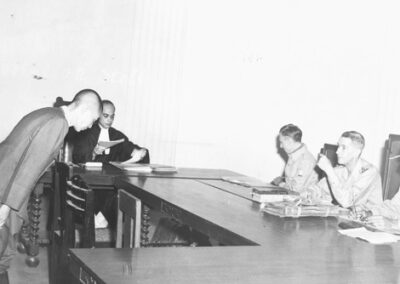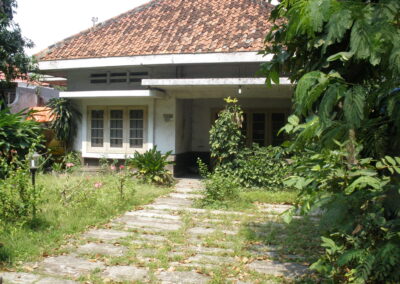Lucille Abendanon
WW2 in Pictures
(The following images are appropriate for a middle grade audience.)
Special thanks to BeeldbankWO2 and NIOD in The Netherlands for permission to use their images.
Batavia falls to the Japanese Army in March, 1942.
Town Hall, Batavia
The town hall as it appears in ‘Songbird’ with its cupola. Photo credit: Personal photos of E. Abendanon.
Welcoming the Japanese army
Not everyone was afraid of the Japanese army. Indonesians welcomed the Japanese invasion as it brought the end of Dutch colonial rule.
Inside Tjideng prisoner of war camp.
Tjideng camp.
Tjideng was a neighborhood in Western Batavia that was fenced off and turned into a prisoner of war camp by the invading Japanese. It was a camp for women, girls and boys up to the age of 10. Photo credit: Beeldbank WO2 – NIOD.
This looks very much like House Two, the house Emmy stayed in with Violet.
House 1, 2 and 3 were in a row, right near the main gate. Photo credit: Beeldbank WO2 – NIOD.
Inside a bungalow in Tjideng.
Prisoners lived in small bungalows, crammed in 20-30 in a single home. There was poor sanitation and little running water. Each prisoner was given 50cm of space. In 1942 there were a few thousand prisoners. By the end of the war in 1945, Tjideng’s population had grown to more than 10 000. Photo credit: Beeldbank WO2 – NIOD – H. Ripassa
Women in Tjideng.
Oma Emmy used to say it was their sense of humor that kept them alive. Photo credit: Beeldbank WO2 – NIOD – H. Ripassa.
Handing out food.
During the war, food was made in a central kitchen and handed out daily. The food was terrible: Weevilly rice most days, maybe a sliver of vegetable or meat, and black tapioca bread. Rations were gradually decreased until prisoners ate just a spoonful of rice a day. Whist this is not a picture of the actual central kitchen in Tjideng, it gives an idea of how food was handed out. Photo credit: Beeldbank WO2 – NIOD.
An outdoor kitchen in Tjideng.
Prisoners made make-shift kitchens outside the bungalows in order to boil water to make Tjideng Tea (which was boiled water and leaves or a strip of leather for taste). Photo credit: Beeldbank WO2 – NIOD – H. Ripassa.
Prisoners bowing at daily tenko.
Part of life in Tjideng was tenko, a daily roll-call, where prisoners faced North and bowed to the Emperor of Japan. Tenko happened day or night, rain or shine, and often went on for hours at the hottest time of day. Beyond the Wire is perhaps the most well known book on the suffering of civilian women and children in prisoner of war camps in Japanese occupied countries.
After the war.
Tjideng’s fence coming down.
After the war, Tjideng went back to being a neighborhood in Batavia. Today, it is called Cideng. Photo credit: Beeldbank WO2 – NIOD – H. Ripassa
Father and daughter reunited outside Tjideng, 1945
I love this photo so much. It makes me think of Emmy and Papa, finally together again. Photo credit: Beeldbank WO2 – NIOD – H. Ripassa
Sonei at his sentencing in 1946.
Captain Kenichi Sonei was tried for war crimes. He was executed in 1946. Photo credit: Beeldbank WO2 – NIOD
Get in touch! I’d love to hear from you.
